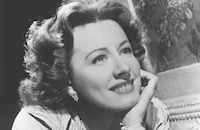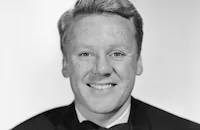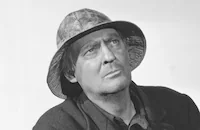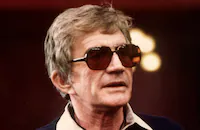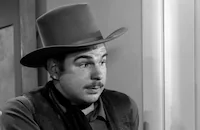A Guy Named Joe put Van Johnson on the Hollywood map, but it was a role that he almost didn't live to play. Shortly into production Johnson was in a terrible automobile accident that crushed part of his forehead and nearly killed him. The studio wanted to replace him, but Spencer Tracy, who was a top MGM star at that time, threatened to walk out if they didn't wait for Johnson's recovery. Tracy and MGM reached a compromise where the studio would push the shooting schedule back several months to accommodate Johnson. In return, Tracy and director Victor Fleming agreed to stop giving co-star Irene Dunne a hard time on the set. Apparently Tracy and Fleming had taken an instant disliking to Dunne and teased her relentlessly, sometimes driving her to tears. Dunne later recalled A Guy Named Joe as a difficult shoot full of tension before Johnson's accident. She heard rumors of being removed from the picture altogether before she, her co-star and the director worked things out. While Johnson recuperated in the hospital with a metal plate in his head, Tracy and Dunne used the time to re-shoot several scenes since earlier rushes showed their visible tension onscreen. Van Johnson, who went on to become a big MGM star, remained forever grateful to Spencer Tracy for influencing the studio to wait for him to complete the picture. "Without Tracy," he later stated in an interview, "my career could have ended then and there." Ironically, it was Johnson's injuries sustained on this movie that prevented him from serving in the real World War II, leaving him to rise to fame during the 1940s in the absence of many of Hollywood's established leading men. For Irene Dunne, who was already obligated to work on her next picture The White Cliffs of Dover(1944), the delayed filming schedule of A Guy Named Joe meant working double duty as an actress on both.
Despite its production problems, A Guy Named Joe became one of the most popular movies of 1943 and was nominated for a Best Writing Academy Award. Special effects wizard A. Arnold Gillespie showcases his talent with impressive WW II visual effects, and he went on to win Academy Awards for his work on such films as Thirty Seconds Over Tokyo(1944) and Ben-Hur(1959). The movie also briefly features Esther Williams in one of her first movie roles before she became MGM's first musical swimming star.
Dunne and Tracy never worked together again in a movie, but Tracy and Van Johnson remained lifelong friends. Director Steven Spielberg's love of this wartime fantasy inspired him to remake the film in 1989 as Always with Richard Dreyfuss, Holly Hunter and Brad Johnson as the romantic triangle and Audrey Hepburn in her last film role as the heavenly angel who brings pilot Dreyfuss back to earth.
Producer: Everett Riskin
Director: Victor Fleming
Screenplay: David Boehm (story), Frederick Hazlitt Brennan (adaptation), Chandler Sprague (story), Dalton Trumbo
Cinematography: George J. Folsey (as George Folsey), Karl Freund
Costume Design: Irene
Film Editing: Frank Sullivan
Original Music: Alberto Colombo (uncredited), Herbert Stothart
Principal Cast: Spencer Tracy (Pete Sandidge), Irene Dunne (Dorinda Durston),
Van Johnson (Ted Randall), Ward Bond (Al Yackey), James Gleason (Lt. Col. W.D. 'Nails' Kilpatrick).
BW-120m. Closed captioning. Descriptive video.
by Andrea Foshee






